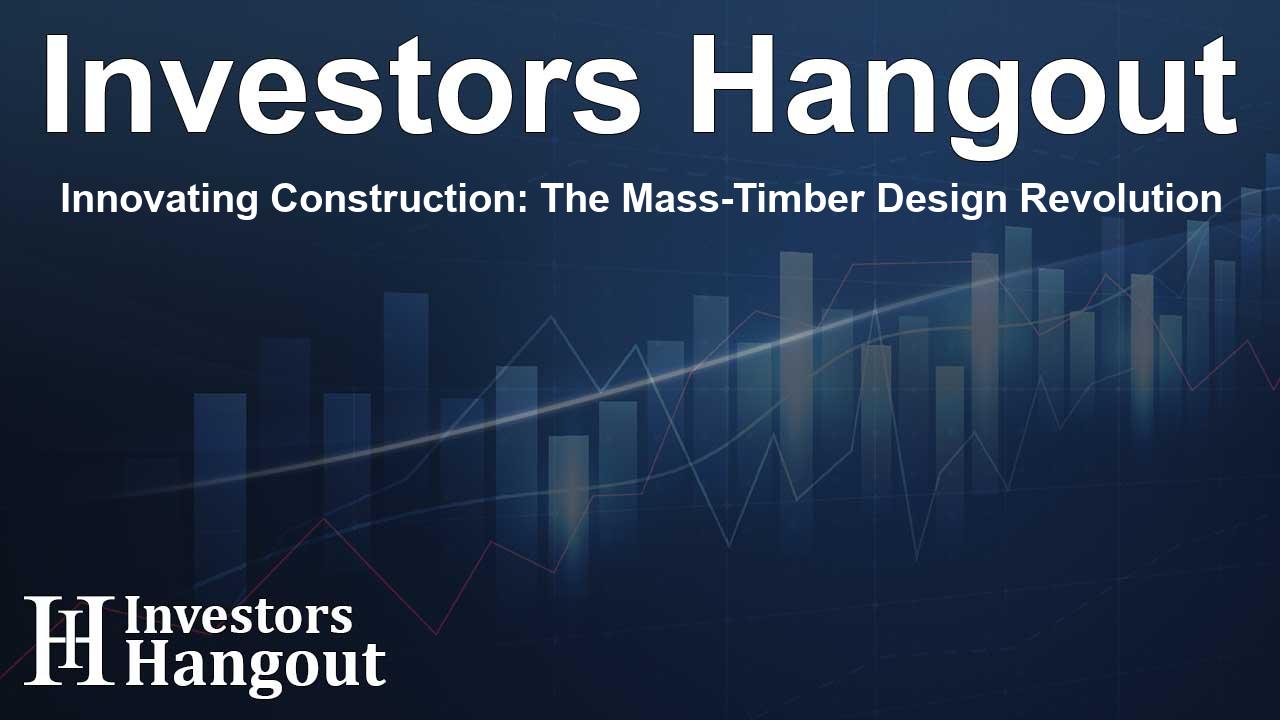Innovating Construction: The Mass-Timber Design Revolution

Transforming the U.S. Construction Landscape with Mass Timber
The architecture, engineering, and construction (AEC) sector is on the brink of a shift. Advocates suggest that introducing mass timber could provide a new avenue for creativity and sustainability in the built environment. Andrew Mack, a knowledgeable architect, emphasizes the necessity of streamlined processes and fresh incentives that could transform how wood is employed in construction.
Lessons from Scandinavian Design
Mack draws inspiration from the elegant timber structures of Scandinavia, where natural materials harmonize to create buildings that exhibit both warmth and sustainability. In his observations of developments in Sweden and Austria, he notes that timber towers in these regions are not merely functional; they evoke a sense of liveliness that is yet to be replicated within the U.S.
The Benefits of Cross-Laminated Timber
One pivotal innovation is cross-laminated timber (CLT), a material that Mack highlights for its efficiency. CLT factories are capable of producing entire floors in mere days, representing a significant improvement over traditional construction timelines. Yet often, the adoption of such materials in the U.S. feels plagued by regulatory hurdles rather than being driven by excitement for innovation.
Bridging the Gap with Education
As part of an educational initiative, Mack undertakes the task of training emerging architects regarding mass timber's potential. His work at the Illinois Institute of Technology aims to instill a deeper understanding of this building approach, contributing to the next generation's broader acceptance of innovative materials.
Learning from Global Collaborations
During a study funded by a grant in Europe, Mack engaged with pioneers who spearheaded the creation of timber skyscrapers. This collaboration among architects and builders illustrates the invaluable potential of networked efforts between universities, producers, and government organizations. Similar partnerships could foster growth and encourage the development of a U.S. mass-timber industry.
The Call for Hybrid Construction
Mack emphasizes that a viable method of advancing mass timber construction is through hybrid construction techniques. By blending CLT with materials like glass, steel, and concrete, architects can create structures that address some of the challenges associated with wooden buildings. This creative fusion can lead to designs that leverage the thermal benefits of timber while utilizing sturdier materials for structural support.
Addressing Structural Concerns
For instance, utilizing vertically oriented CLT walls can mitigate the compression issues that arise in flat wooden floors. Integrating heavier materials can prevent uncomfortable swaying in taller timber structures, ensuring a stable environment for occupants.
Fostering a Domestic Mass-Timber Marketplace
Mack advocates for the establishment of a robust domestic mass-timber industry. He envisions a cohesive partnership where local producers, architects, and educators collaborate much like their European counterparts. By working together, they can advance timber innovation that not only benefits aesthetics but also supports economic development in local communities.
The Potential of Local Sourcing
By adopting local wood supplies, U.S. mass timber construction has the chance to become not only an environmentally friendly choice but also an economically advantageous one. Mack believes local sourcing can help alleviate housing shortages while improving community sustainability and addressing carbon reduction goals.
Technological Advancements in Prefabrication
To harness the potential of mass timber fully, Mack notes how technology, particularly through prefabrication, can enhance construction efficiency. For instance, companies that specialize in building information modeling (BIM) are refining how timber components are designed, promoting greater customization and efficiency within the construction process.
Global Innovations in Prefabrication
In Sweden, for example, the innovative use of prefabricated wooden hotel rooms exemplifies the advanced techniques driving the mass timber movement forward. Such methods not only reduce construction times but also support innovative designs that could revolutionize the American architectural landscape.
Conclusion: The Future of Mass Timber Construction
Reflecting on the timeless nature of wood as a building material, Mack points out that it has infinite possibilities waiting to be explored. The key question remains: how far can the U.S. push these boundaries? With concerted efforts from the AEC sector, including education, regulation reform, and technological advancement, the transformative potential of mass timber could finally take root in American architecture.
Frequently Asked Questions
What is mass timber?
Mass timber refers to a category of engineered wood products designed for constructing large buildings, particularly using materials like cross-laminated timber (CLT).
Why is mass timber important for U.S. construction?
Mass timber presents a sustainable alternative to traditional building materials, reducing carbon footprints while promoting creativity and aesthetic versatility in construction.
What are hybrid construction techniques?
Hybrid construction combines mass timber with other materials like steel or concrete to enhance structural integrity and mitigate issues associated with wood-only structures.
How can local sourcing impact mass timber construction?
Utilizing locally sourced wood can improve sustainability, reduce transportation costs, and support local economies while promoting eco-friendly building practices.
What is the role of technology in mass timber construction?
Technology influences prefabrication and design efficiency in mass timber construction, allowing for greater customization and faster assembly of building components.
About The Author
Contact Ryan Hughes privately here. Or send an email with ATTN: Ryan Hughes as the subject to contact@investorshangout.com.
About Investors Hangout
Investors Hangout is a leading online stock forum for financial discussion and learning, offering a wide range of free tools and resources. It draws in traders of all levels, who exchange market knowledge, investigate trading tactics, and keep an eye on industry developments in real time. Featuring financial articles, stock message boards, quotes, charts, company profiles, and live news updates. Through cooperative learning and a wealth of informational resources, it helps users from novices creating their first portfolios to experts honing their techniques. Join Investors Hangout today: https://investorshangout.com/
The content of this article is based on factual, publicly available information and does not represent legal, financial, or investment advice. Investors Hangout does not offer financial advice, and the author is not a licensed financial advisor. Consult a qualified advisor before making any financial or investment decisions based on this article. This article should not be considered advice to purchase, sell, or hold any securities or other investments. If any of the material provided here is inaccurate, please contact us for corrections.
